Stepwells are unique architectural marvels with functional underpinnings. Step wells find mention in the Vedas and early examples can be found in the Indus Valley Civilization, Mohenjo-daro sites and Dholavira. From being simple step wells that had steps going down to reach a water reservoir, they evolved into fantastic architectural wonders as evidenced by the Patan Rani Ki Vav. Most of the step wells in India are concentrated in Gujarat, Rajasthan and Maharashtra. The majority of step wells are in Gujarat. Here are a few of the over 200 step wells to be found in Gujarat. The Stepwells of Gujarat are famous worldwide. Read on to learn more…
Rainwater and groundwater collects at one place deep below the surface of the Earth. A step well comprises of a series of steps that leads to the water reservoir. Step wells were the source of water and also a place of social gathering. The simplest step well has just some steps going down to the water while the latter stepwells constructed after 600 AD and patronized by the kings and Muslim rulers turned into elaborate pieces of architecture. These step wells, because they were underground, provided relief during scorching summers that prevail in Gujarat. Step wells are known as “Vaav” or “Vav” in Gujarat in the local language and “baoli” in Rajasthan.
Popular Stepwells of Gujarat
Earliest Stepwells in Saurashtra
Saurashtra probably has some of the earliest constructed stepwells that are still in existence. One can be found in Dhank in Rajkot district. Bochavdi Vav is located close by in the Alex hills. Then there’s the Jhilani step well and the Manjushri Vav. All these were built by Hindu rulers according to Saurashtra style of architecture.
The Uparkot Cave Stepwell in Junagadh
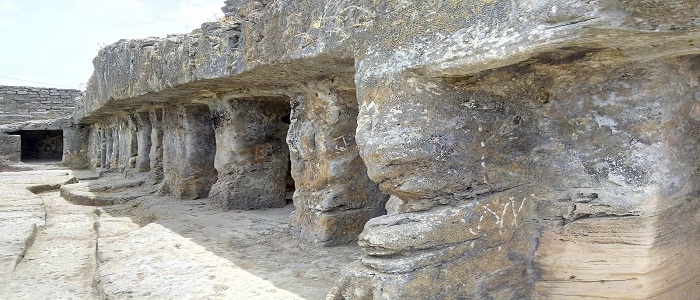
The Uparkot caves in Junagadh date back to the 4th century and house a small step well. The Navghan Kuvo is another step well with a circular staircase not far away from the Uparkot Caves. Another step well is the Adi Kadi Ni Vav in close proximity.
Modhera Stepwell
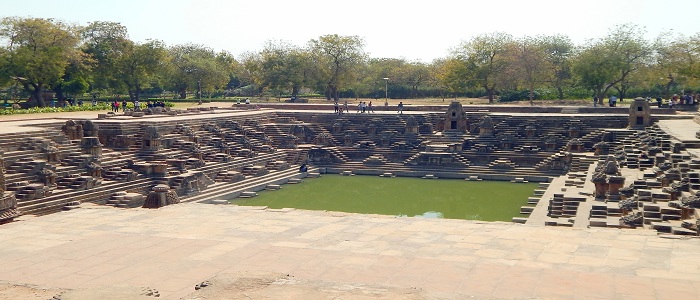
The Modhera stepwell is part of the larger Sun temple complex located near Mehsana in North Gujarat. The chief attraction here is the Sun temple. The step well is to the west of the tank facing the Sun temple and it dates to the 10th/11th century, the same time the temple was built during the rule of Bhima I of the Chalukyan dynasty There is one entrance and there are two towers. The stonework is carved but not quite as elaborately as in some of the better known step wells.
Various Stepwells in North Gujarat
There are several such Vavs ascribed to the Chalukyan rulers such as the step well in Nadiad said to have been built by Minaldevi, mother of the King Jayasimha Siddharaja. She is also credited with having built the step well in Bhalej village in Sabarkantha as well as the Minaldevi Vav in Virpur in Rajkot. However, the most famous step well and the most elaborate one with religious significance is the Patan Rani Ki Vav built around 1022 AD by Queen Udayamati in honor of her husband, Bhima I.
Rani Ki Vav, Patan
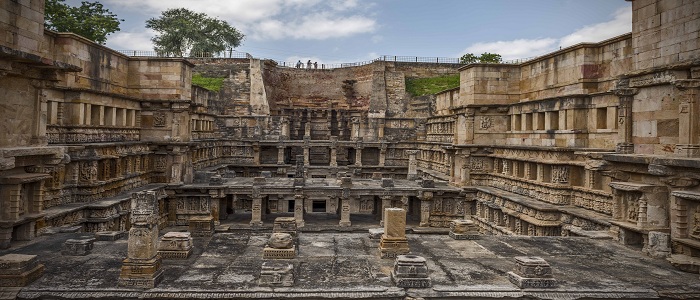
Patan, at one time was the leading city and the capital of the region. It is said that Ahmedabad’s teen Darwaja and the walls are inspired by Patan’s teen Darwaja. Patan is also known for the famed Patola saree that takes six months to weave. Rani Ki Vav is a wonder of architecture. It is said that the Vaav was buried when the Saraswati River flooded it and it lay undiscovered till 1980. The Archaeological Survey of India reconstructed the Vav. It has elaborate and beautiful sculptures of Hindu Gods, yoginis, nagkanyas and apsaras. The Vav is a temple of sorts, dedicated to Lord Vishnu and depicts his ten avataras in the form of beautiful carvings. There are carvings of Lord Vishnu in his various avataras such as Varaha, Vaman, Narsinh, Rama, Kalki and Krishna. Even Buddha is depicted here because it believed he is an incarnation of Lord Vishnu. The highlight is the statue of Lord Vishnu in his reclining form located in the heart of the well. The statues are all in a beautiful state of preservation because they remained covered and protected against the ravages of time and the elements. Rani Ki Vav is a UNESCO heritage site and even if one does not visit any other stepwell of Gujarat, this should be on the must visit list. It is undoubtedly the most beautifully carved one.
Adalaj Vav, Adalaj, Gandhinagar
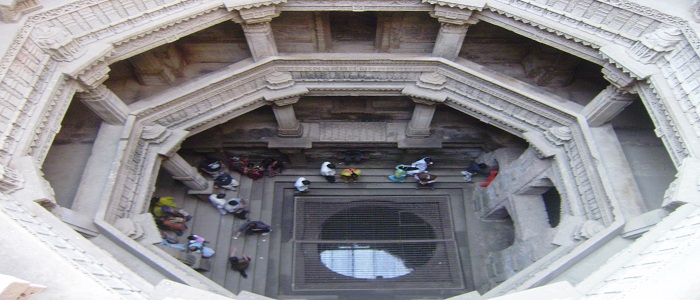
Located just a half hour’s drive from Ahmedabad is the beautiful Adalaj Vaav in Adalaj village near Gandhinagar, the State Capital. It is said to have been built in 1499 by Rana Veer Singh of the Vaghela dynasty. He was killed in a war with Mahmud Begada who then developed the Vav further and gave it a Muslim flavor. The original well could well be older since it is made of brickwork and stone and has several sculptures of deities that have been defaced by Muslim builders. The five storey deep step well has no carvings of gods or goddesses and the elaborate carvings are mainly geometric and floral in nature with a sole plaque where a deity appears. The Adalaj step well has several legends associated with it. Rana Veer Singh was killed by Mahmud Begada. His widow, the queen Rani Roopmati wished to commit saree but Mahmud Begada, instead proposed that she marry him. In a quandary, she asked him to complete the step well which he did and reminded her of her promise. Instead of marrying him, she jumped into the well and committed suicide. The main step well is octagonal in shape and follows the Solanki style of architecture. The entrance and steps going down five floors have beautifully carved pillars. The most noteworthy piece is the symbolic pot of water of life, an elaborate carving from a single piece of stone. Another is the tree of life, similarly intricately carved.
Dada Harir Vav, Ahmedabad
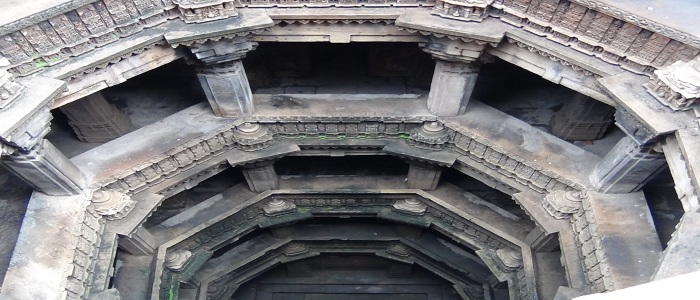
The Dada Harir Vav in Asarwa in Ahmedabad city is no less beautiful than the Adalaj Vav and rightly so since it was built by Dhai Harir, a superintendent lady in the harem of Mahmud Begada. The stepwell was built in 1499 and has a pattern similar to the Adalaj Vav, going down five stories with an octagonal structure for the well and beautiful carved pillars. There is an utter sense of peace and quiet when one sits at the bottom steps.
Mata Bhavani Vav, Ahmedabad
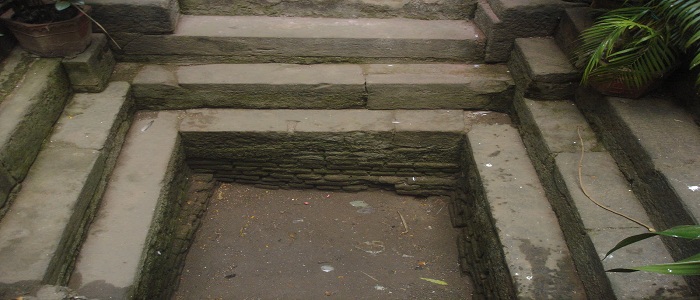
Mata Bhavani Vav is located in Asarwa, close to the Dada Harir Vav. Built by kings of the Chalukya dynasty in the 11th century, it has steps leading to the well below and an open construction with carved columns and beams. It takes its name after Goddess Bhavani, whose idol is houses in a small temple in the lower gallery.
Jethabhai Vav, Ahmedabad
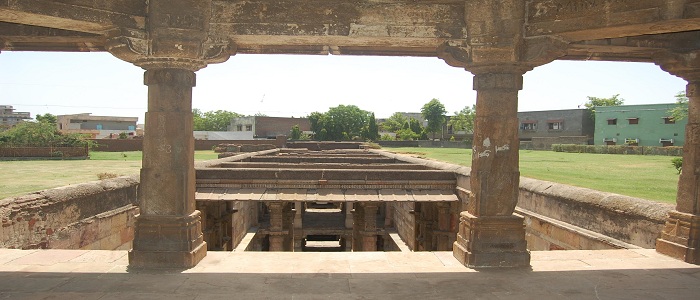
Jethabhai Vav is located in Isanpur in Ahmedabad. It was built by Jethabhai Jivanlal Nagjibhai around 1860 and it is small in size, just 210 feet long and 22 feet wide with a dome resting on pillars at the entrance. It lay neglected for years but was restored by the ASI in 2017.
Amritavarshini Vav, Ahmedabad
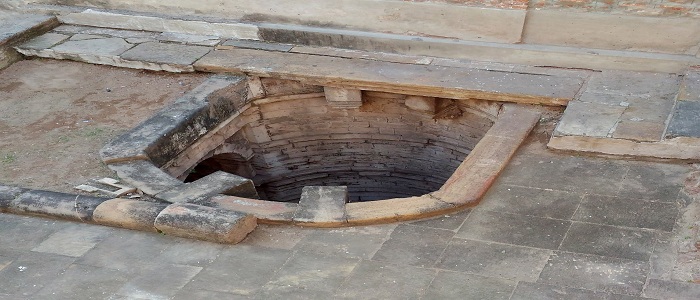
This is a small step well located in the busy Panchkuva area near Kalupur railway station. Its entrance is small and one almost misses it unless one is specifically looking for it. The Panchkuva Vav, as it is known, had five wells and the Vav was developed in 1723 by Raghunath Das, Diwan of Haider Quli Khan, and the governor of Gujarat. It goes three storeys deep and has simple architecture with an L shape.
Bhammariyo Kuvo, Mahemdavad
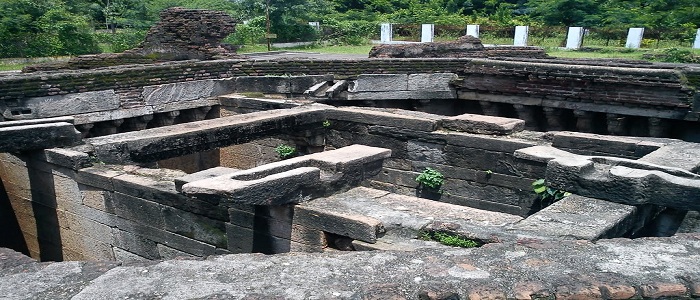
Sultan Mahmud Begada, whose remains lie at the Sarkhej Roza in Ahmedabad, which also he built, is credited with founding the small town of Mahmud Begada. It is about an hour by train on the Ahmedabad-Nadiad section. There is a step well here, the Bhammariyo Kuvo or Vav alongside the Chanda Suraj Palace and Roza rozi Dargah. Much neglected but now being restored, this is another step well that is worth a visit, especially because of the proximity of the palace. The step well goes seven floors below the ground and what makes it different from other step wells is that each floor has a different type of architecture but unfortunately, the bottom levels are filled.
Other Stepwells
There are dozens of other step wells dotting the landscape of Gujarat, some of them known and visited while some are so obscure that even the local people do not know about their existence. Surendranagar in Gujarat has the Chaumukhi stepwell in Chobari village and it has spiritual significance because of the sculptures of gods adorning the pillars and walls. Wadhwan, its twin city, has the Ganga step well dating back to 1169 AD. There is also another Vav; the Madha Vav built in 1924 by Madha and Keshav, two Nagar Brahmin ministers in the court of Karna dev.
From 500 AD to 1100 AD, the Hindu rulers engaged in the construction of stepwells as a source of water for the local people. Vastupal and Tejpal, ministers in the Vaghela court built the Ra Khengar stepwell that lies between Junagadh and Vanthali. The 14th and 15th century saw a spurt in the construction of step wells not only by Hindu rulers but also by Muslims, because stepwells were primarily for the purpose of serving as a source of water supply.
